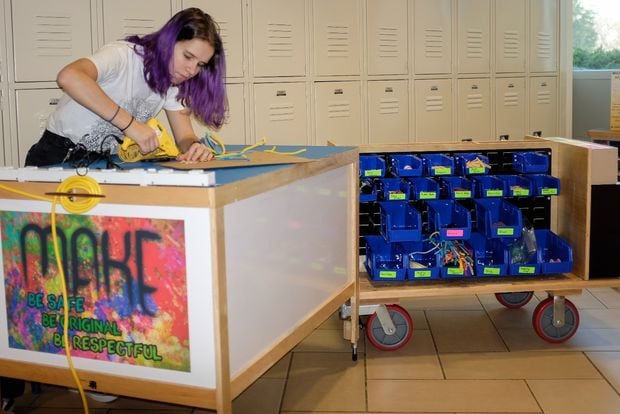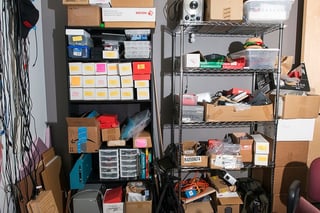We are hearing a growing buzz in the maker education community around maker carts. These carts provide a flexible way to implement hands-on STEAM education in schools and districts without placing the burden on individual teachers to source and store all the materials. By creating a mobile source for maker education materials that can be accessed by any teacher in the school, from their classroom, maker carts make it easier to add hands-on STEM education to any class. They also allow educators to collaborate and create project ideas with one another in a flexible and budget-friendly way. Read on for the Top 3 benefits of maker carts that we’ve seen.

Make this cart by Josh Weisgrau
1. Reduced Impact on Budget
Schools are finding that being able to purchase one or two sets of materials in the form of a maker cart that can be checked out by teachers is the most effective way to spend funding. With this method, schools are able to check the carts out from a centralized location, like a library or office, without having to purchase individual resources for each teacher. Maker cart materials can then be used to enhance curriculum or allow time for exploratory play and tinkering in any classroom.
Choosing nonconsumable goods helps stretch the budget. Popular maker carts in the STEAM realm include a small collection of electronics kits that can be used by multiple students over and over again, thus expanding their exposure to different types of technology and eliminating the need to restock some or all components.
2. Interdisciplinary Collaboration
Maker carts allow for teachers of different subjects across the school or district to collaborate through activity and curriculum sharing. Allowing teachers at different grade levels to check out the cart’s equipment creates new ways of approaching projects and a STEAM literacy that students can build on throughout their academic careers. A shared space and collaborative environment allows teachers to quickly find and implement ideas in their classrooms, build upon and adapt these projects and create new ideas. The same cart that is used in a math class can be used in an art class or an after-school program.
3. Space Saving

When bringing maker education to the classroom, space can become an issue for teachers, as many find it hard to store a bin or cart full of electronics, craft materials and even recyclables in their classroom. It becomes an easier solution when the district or school creates a shared set of carts that don’t have to be stored in the classroom at all times. Schools can more easily find room to allocate a closet or shelving space for storage of all carts, while assigning an educator to be responsible for the checkout/check-in procedure. Carts can be stored in this centralized location when they are not checked out, eliminating the concern teachers have for storing a large amount of electronics and materials in their classroom.
Is your school currently using or looking into maker carts? We'd love to hear your thoughts and how the carts are working for you! Please share your stories below.



teaching tools, Maker Education, makerspace, helpful information